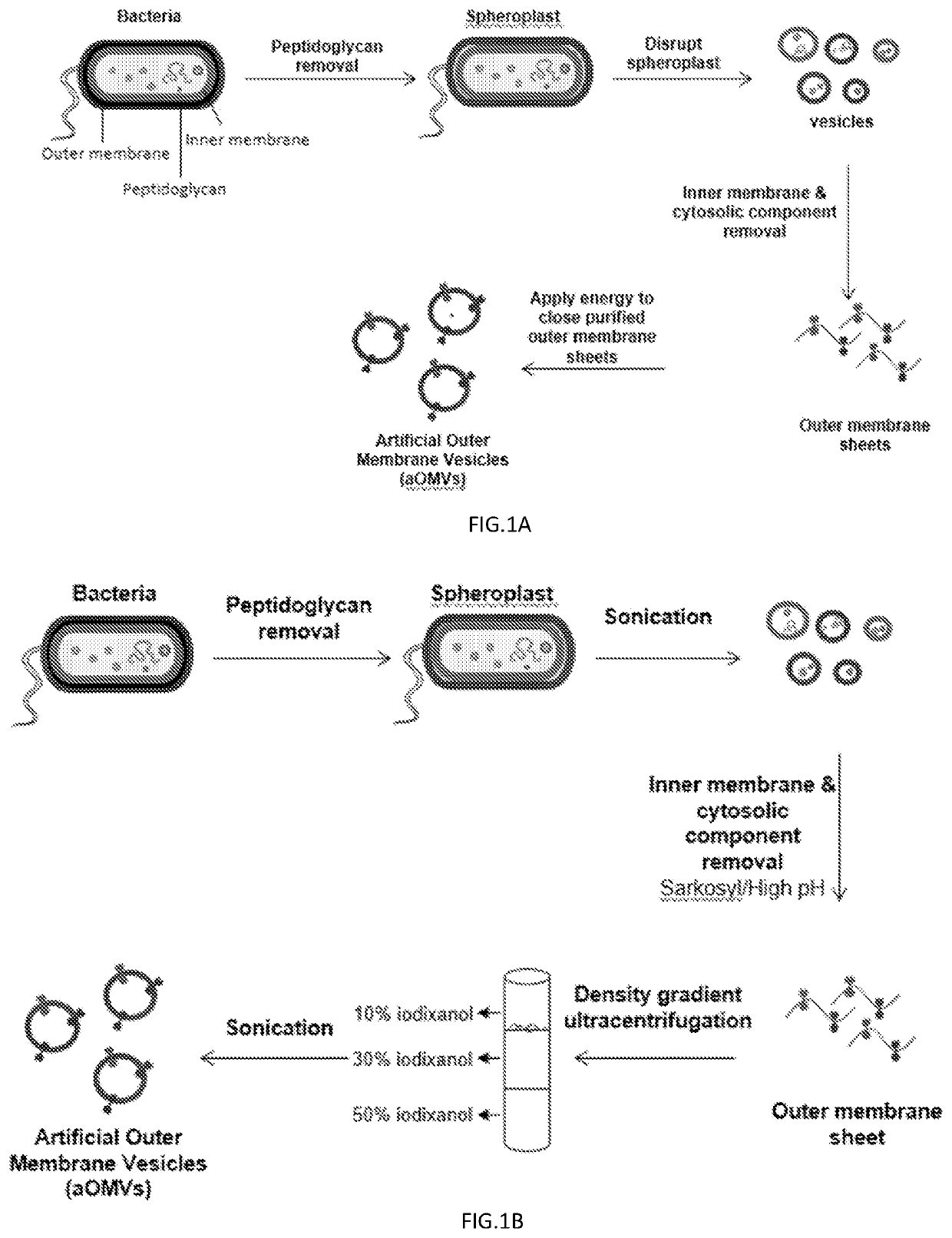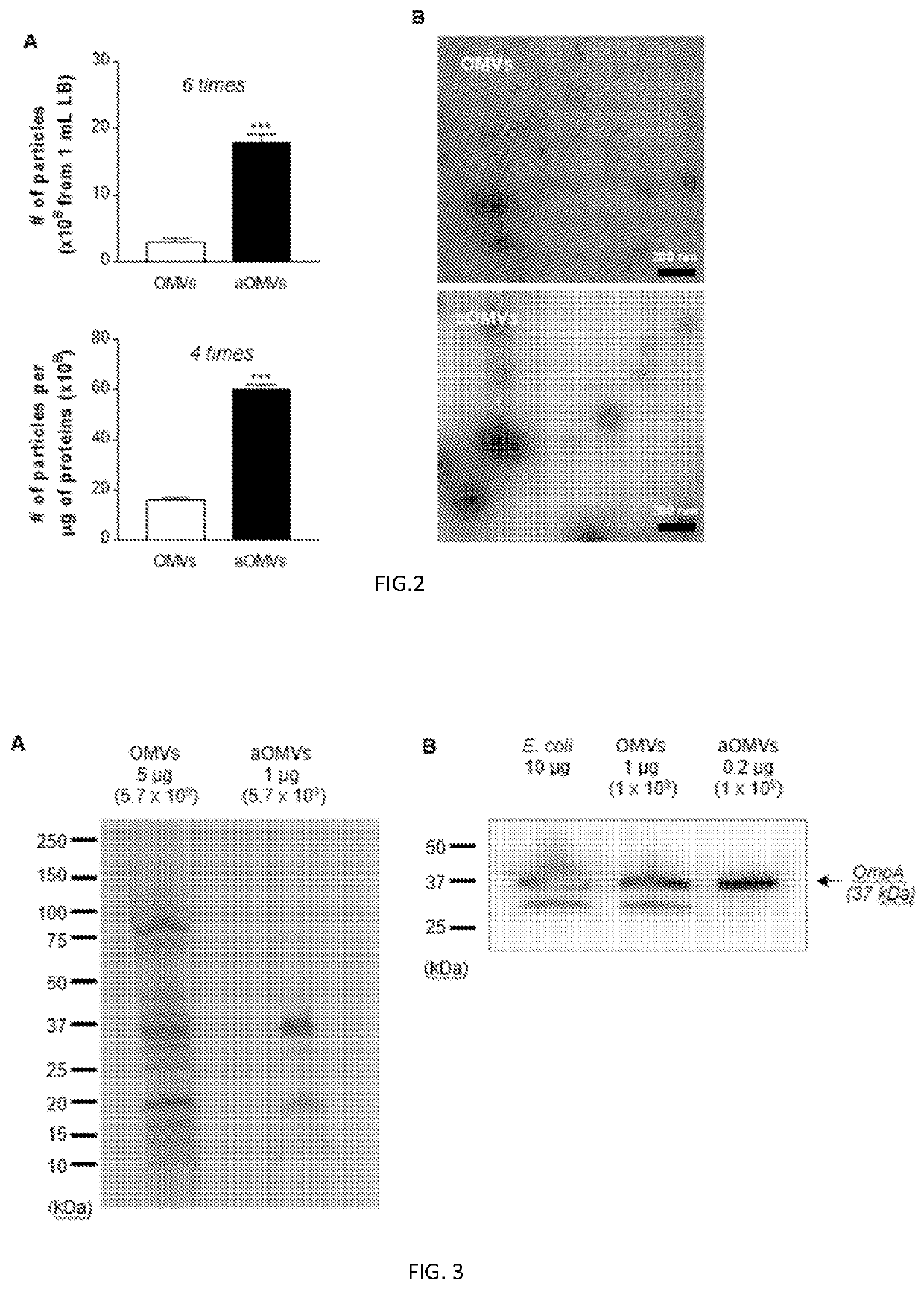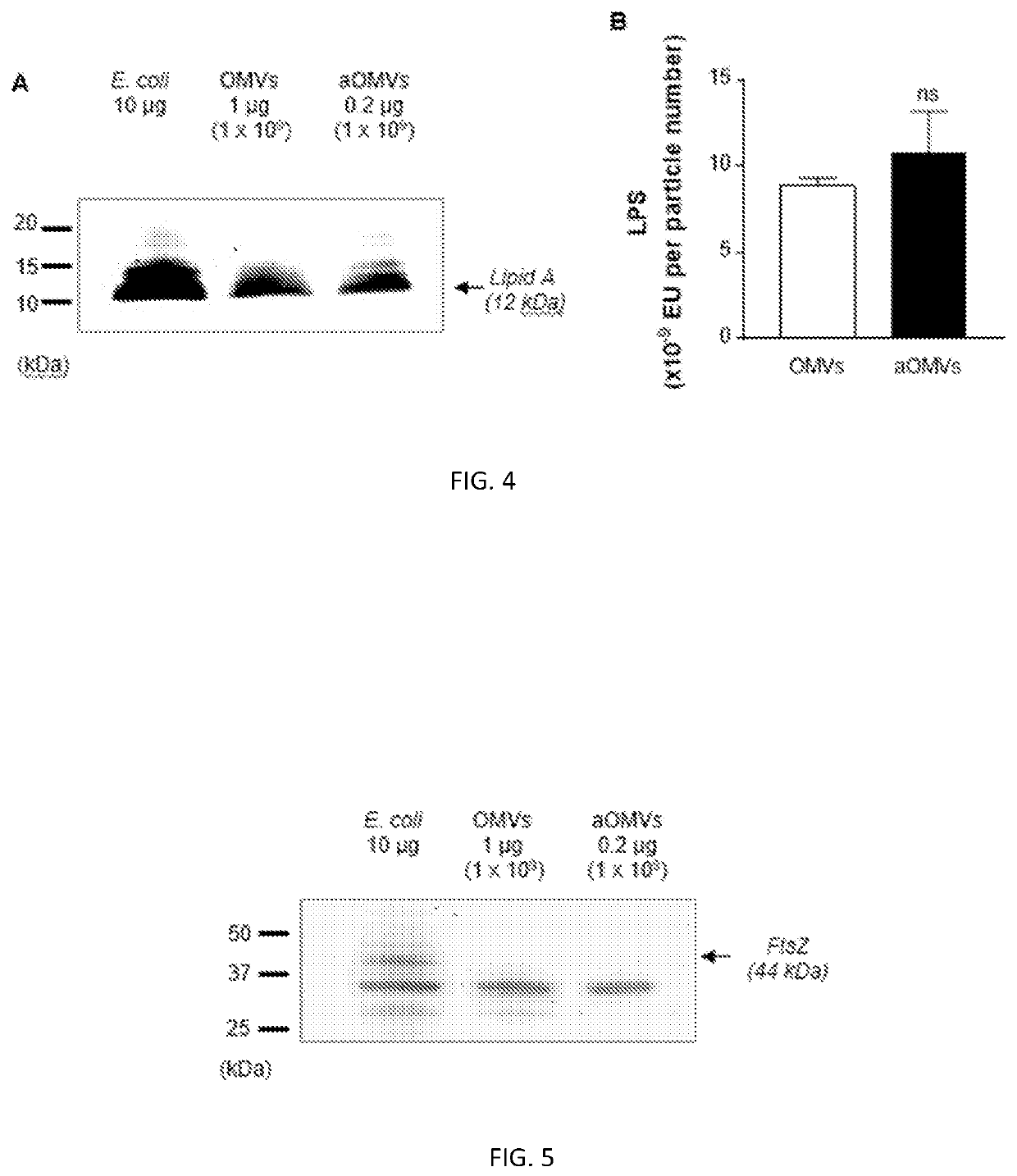Bacteria-derived vesicles and uses thereof
- Summary
- Abstract
- Description
- Claims
- Application Information
AI Technical Summary
Benefits of technology
Problems solved by technology
Method used
Image
Examples
example 16
and Characterization of Mice Melanoma Tissue-Derived EVs
[0569]Methods
[0570]Preparation of Tumor EVs
[0571]Tumor pieces from human or mice were gently sliced into small fragments (1-2 mm) and incubated with Collagenase D (Roche) (2 mg / ml) and DNase I (Roche) (40 U / ml) for 30 min at 37° C. to dissolve fibrotic structures. After a filtration step (70 μm pore size), cells and tissue debris were eliminated by centrifugation at 3,00×g for 10 min and 2,000×g for 20 min. Supernatant were centrifuged at 16,500×g for 20 min and 118,000×g for 2.5 h to collect larger vesicles and smaller vesicles, respectively (Ti45 rotor: fixed angle rotor). All centrifugations were performed at 4° C. Larger and smaller vesicles were resuspended in PBS, combined and further purified by an isopycnic centrifugation using an iodixanol gradient (Axis-Shield PoC AS). EVs (larger and smaller EVs) in PBS (1 mL) were mixed with 60% iodixanol (3 mL) and laid on the bottom of an ultracentrifuge tube followed by addition ...
example 17
Activity of Mouse Melanoma Tissue-Derived EVs Against Melanoma Growth
[0576]Methods
[0577]Mice Experiments
[0578]Mice (wild type C57BL / 6 genetic background, 6 weeks old) were subcutaneously injected with 5×105 melanoma cells (B16F10), and maintained for one week to form a measurable mass of tumor (2-3 mm). Then, melanoma EVs (10 μg) were intraperitoneally injected three times in combination with E. coli aOMVs or rePDNVs (5×109) to the mice at regular intervals of one week. The tumor size was measured two times a week. The tumor volume was calculated according to the formula v=1×s2 / 2 [v, volume; 1, a length of the longest axis of the cancer mass; s, a length of the shortest axis].
[0579]Results
[0580]A combination of tumor EVs with aOMVs or rePDNVs caused significant reduction (35%) in the tumor volume (FIG. 50).
example 18
Immunogenicity of Mouse Melanoma Tissue-Derived EVs by aOMVs or rePDNVs
[0581]Methods
[0582]Antibody Titer Against Tumor Lysates or EV Proteins
[0583]Melanoma EVs (10 μg) were intraperitoneally injected three times in combination with E. coli aOMVs or rePDNVs (5×10) to the mice at regular intervals of one week. Blood samples were taken from mice 3 days after each injection and assayed for their antibodies specific for B16F10 lysates or EV proteins. The mouse serum was 1:500 diluted in 1% BSA / PBS and placed in 96-well plates coated with 200 ng of B16F10 lysates or EV proteins. After incubation for 2 h, immunological changes were measured with a peroxidase-conjugated anti-mouse antibody.
[0584]Splenocyte Cytokines
[0585]Seven days after the three injections of melanoma EVs (10 μg) in combination with E. coli aOMVs or rePDNVs (5×109), CD4+ T cells from spleen were isolated from the mice. The cells (5×105) were incubated for 72 h with 1 μg / mL of melanoma EV proteins, followed by ELISA to qua...
PUM
| Property | Measurement | Unit |
|---|---|---|
| Diameter | aaaaa | aaaaa |
| Acidity | aaaaa | aaaaa |
| Force | aaaaa | aaaaa |
Abstract
Description
Claims
Application Information
 Login to View More
Login to View More - R&D
- Intellectual Property
- Life Sciences
- Materials
- Tech Scout
- Unparalleled Data Quality
- Higher Quality Content
- 60% Fewer Hallucinations
Browse by: Latest US Patents, China's latest patents, Technical Efficacy Thesaurus, Application Domain, Technology Topic, Popular Technical Reports.
© 2025 PatSnap. All rights reserved.Legal|Privacy policy|Modern Slavery Act Transparency Statement|Sitemap|About US| Contact US: help@patsnap.com



